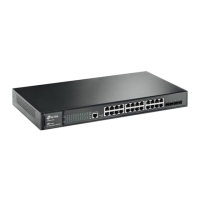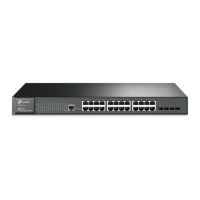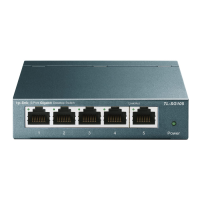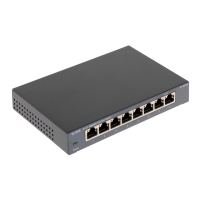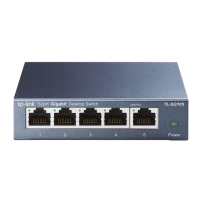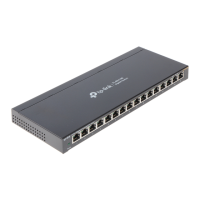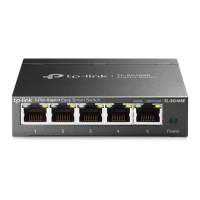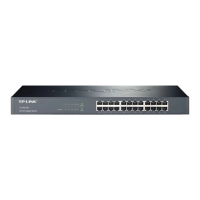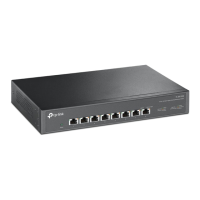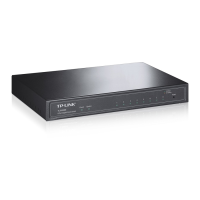Syntax
l2protocol-tunnel type nni
l2protocol-tunnel type uni { 01000ccccccc | 01000ccccccd | gvrp | stp | lacp
| all } [ threshold
threshold
]
no l2protocol-tunnel
Parameter
nni —— Specify the port type according to its connecting device in the
network. Specify the port’s type as NNI if it is connecting to the ISP network.
uni —— Specify the port type according to its connecting device in the
network. Specify the port’s type as UNI if it is connecting to the user’s local
network.
01000ccccccc | 01000ccccccd | gvrp | stp | lacp | all —— Select the
supported Layer 2 protocol type. Packets of the specified protocol will be
encapsulated with their destination MAC address before they are sent to the
ISP network. Packets will be decapsulated to restore their Layer 2 protocol
and MAC address information before they are sent to the customer network.
• 01000ccccccc: Enable protocol tunneling for the packets with
destination MAC address 01-00-0C-CC-CC-CC. 01-00-0CC-CC-CC-CC is
used as the destination MAC address of the CDP/VTP/PAgP/UDLD packets.
• 01000ccccccd: Enable protocol tunneling for the packets with
destination MAC address 01-00-0C-CC-CC-CD. 01-00-0CC-CC-CC-CD is
used as the destination MAC address of Cisco PVST+ BPDUs.
• gvrp: Enable protocol tunneling for the GVRP packets.
• stp: Enable protocol tunneling for the STP packets.
lacp: Enable protocol tunneling for the LACP packets.
• all: All the above Layer 2 protocols are supported for tunneling.
threshold
——Configure the threshold for packets-per-second accepted for
encapsulation. Packets beyond the threshold will be dropped. It ranges from
0 to 1000.
Command Mode
Interface Configuration Mode (interface gigabitEthernet / interface range
gigabitEthernet / interface port-channel / interface range port-channel)
Privilege Requirement
Only Admin and Operator level users have access to these commands.
57
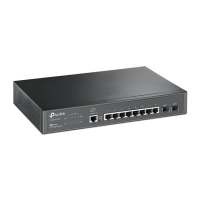
